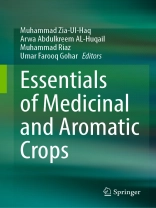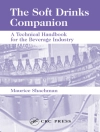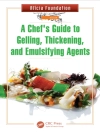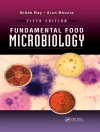Medicinal and aromatic crops (MACs) are high-value crops since the natural products obtained from them are low-volume high-value commodities that have numerous applications in various sectors such as the food, beverage, food supplement, flavor and fragrance, perfumery and cosmetics, pharmaceutical and aromatherapy industries. In addition, the plant biomass is used in the production of teas and medical applications in traditional and also modern medicines. MACs are important mainly because they contain plant secondary metabolites such as essential oils, alkaloids, glygosides, saponins, tannins, vitamins and other bioactives. Plant secondary metabolites are differentiated from plant primary metabolites of photosynthesis and respiration since they are directly involved in growth and development of plants.
Some MACs are used as spices and culinary herbs since they contain mainly essential oils, and are used as tonic to the digestive system, appetite modification and othersystems and may facilitate nutrient uptake and utilization from various foods. A significant amount of MACs and their natural products have also demonstrated antimicrobial, antifungal and bactericidal activity and significant antioxidant capacity. In the past, MACs and their natural products have been used as a source for various medicines, in food and beverage production and in aroma products.
Essentials of Medicinal and Aromatic Crops summarizes the current knowledge on medicinal and aromatic crops, including the agronomical practices of important MACs and their products, their beneficial effects and utilization of MAP and their products. The chapters provide a comprehensive guide to the most important and used medicinal and aromatic crops and their use in functional foods, nutraceuticals and as bioactives against various ailments, providing researchers, teachers, chemists, food scientists, agronomists and agroecologists in academia, industry and government a fully up to date singular source on this important topic.
Table of Content
Chapter 1: Tissue Culture of Medicinal Plants.- Chapter 2: Mentha.- Chapter 3: Amla.- Chapter 4: Belladonna.- Chapter 5: Babchi.- Chapter 6: Ashwagandha.- Chapter 7: Cowhage.- Chapter 8: Costus.- Chapter 9: Coleus.- Chapter 10: Cinchona.- Chapter 11: Patchouli.- Chapter 12: Black pepper.- Chapter 13: Wild Marigold.- Chapter 14: Vanilla.- Chapter 15: Tuberose.- Chapter 16: Thyme.- Chapter 17: Onion.- Chapter 18: Garlic.- Chapter 19: Fennel.- Chapter 20: Henbane.- Chapter 21: Holy Thistle.- Chapter 22: Guggul.- Chapter 23: Glory Lily.- Chapter 24: Aniseed.- Chapter 25: Sacred Basil.- Chapter 26: Khus.- Chapter 27: Isabgol.- Chapter 28: Kalonji.- Chapter 29: Licorice.- Chapter 30: Brahmi.- Chapter 31: Buckwheat.- Chapter 32: Tianma.- Chapter 33: Chili pepper.- Chapter 34: Kewda.- Chapter 35: Jasmine.- Chapter 36: Opium poppy.- Chapter 37: Lavender.- Chapter 38: Tulsi.- Chapter 39: Chamomile.- Chapter 40: Bhumyamalaki.- Chapter 41: Moringa.- Chapter 42: Saffron.- Chapter 43: Barbados.- Chapter 44:Tea.- Chapter 45: Celery.- Chapter 46: Dioscorea.
About the author
Dr. Muhammad Zia-Ul-Haq is working in the Office of Research, Innovation and Commercialization at University of Engineering and Technology, Lahore, Pakistan
Dr. Arwa Abdulkreem AL-Huqail is a Distinguished Associate Professor in the Department of Biology, College of Science at Princess Nourah Bint Abdulrahman University in Saudi Arabia Dr. Muhammad Riaz is an Assistant Professor in the Department of Pharmacy at Shaheed Benazir Bhutto University Sheringal in Pakistan
Dr. Umar Farooq Gohar is an Assistant Professor at the Institute of Industrial Biotechnology, Government College University Lahore in Lahore, Pakistan












